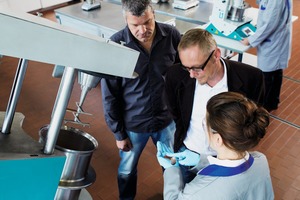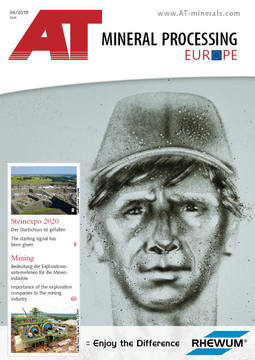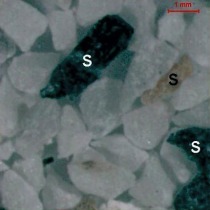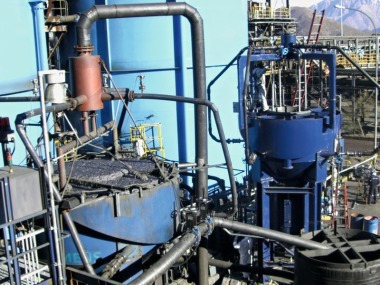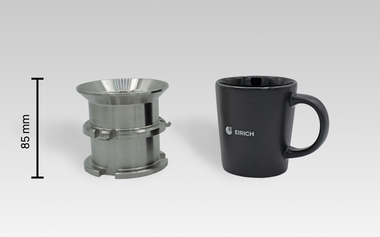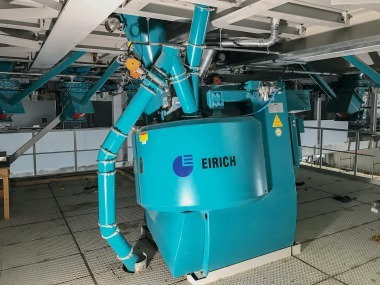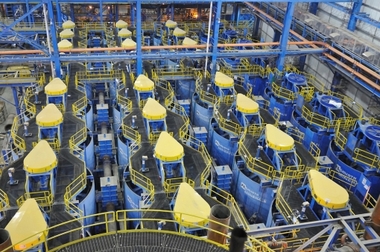Economical beneficiation of tailing mounds containing ore
Ores and other useful minerals occur in nature almost entirely in a contaminated form. For use as a raw material, the gangue needs to be separated. Since the start of the 20th century, the flotation method has been the primary way to extract the raw materials. The substances that are to be separated are initially ground down to a size that is small enough so that the individual components exist as physically separate grains. The mixture is then suspended in an aqueous solution and aerated with a turbulent gas flow. Under the addition of auxiliary materials, it is then possible to bind mineral granules to gas bubbles, which then rise to the surface where they can be skimmed off as froth. The other particles (referred to as the flotation tails) remain in the turbid slurry or form a sediment at the bottom of the flotation cell and are then pumped for disposal into so-called tailing mounds. The rock that accumulates during mining and the rock that is co-extracted in the process, which is separated out during beneficiation, forms these mounds.
In the past, beneficiation of dumped fine tailings, which often represent a risk for the environment, was often not cost-effective. Even mechanical dewatering was too complex and expensive. Now though, high-performance mixing technology makes possible cost-effective beneficiation of flotation tailings that still contain a significant level of usable minerals – and this even with varying moisture contents. In order to extract the minerals, the gangue materials usually need to be mixed with one or more other materials and granulated. Suitable mixing and granulation technology is required for this.
The EIRICH mixer has proved itself in countless applications. It has been in use for decades in a wide range of industries for all kinds of mixing and granulating tasks, particularly for applications demanding a high quality of mix. The unique working principle of this mixer normally enables very advantageous process control. Thanks to the EIRICH technology, it is possible to process materials of very different types and consistencies without any problems, for example in order to produce granulates from slurries under the addition of dry materials. In the process, agglomerates are disintegrated in the best possible way so that the end product offers an excellent quality of mix, even if auxiliary substances such as chemicals are added in the ppm range. The good self-cleaning effects and the system-related low wear of the mixer are often important aspects.
In addition to mixers that operate on a batch basis, today we also see use of mixers that operate continuously. For example, it has been shown in the processing of tailing mounds from magnesite production that these mixers offer significant process and cost advantages. One of the advantages here is that – unlike in batch mode – there is no time needed for filling and emptying. In addition, smaller mixers with lower input power can be used.
The system-related advantages of EIRICH mixing technology also come into their own for other recycling tasks, during waste processing, in landfill engineering and in the reprocessing of contaminated sites. Examples include the agglomeration of dust from steelworks for recirculation to the sintering conveyor or for addition to reduction processes, or for the agglomeration of converter dusts containing zinc for input into the Waelz process. Special mixer designs are used for the processing of contaminated soil or – in the form of so-called vacuum mixers – for the drying of paint/enamel sludge with explosion protection (spray can recycling). Heated mixers are available for special applications (up to 250 °C).
Every mixer is specially designed for the relevant purpose. The company‘s internal test centers are available all around the world for the performance of customer trials so that process parameters can be defined. EIRICH can also supply a suitable rental mixers for subsequent upscaling tests, allowing the cost-effectiveness of the preparation process to be tested at a larger scale.

